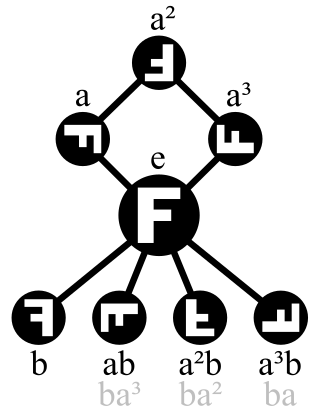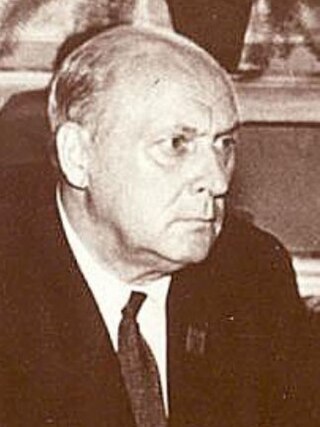Related Research Articles

In mathematics, an abelian group, also called a commutative group, is a group in which the result of applying the group operation to two group elements does not depend on the order in which they are written. That is, the group operation is commutative. With addition as an operation, the integers and the real numbers form abelian groups, and the concept of an abelian group may be viewed as a generalization of these examples. Abelian groups are named after early 19th century mathematician Niels Henrik Abel.

In mathematics, the classification of finite simple groups is a result of group theory stating that every finite simple group is either cyclic, or alternating, or it belongs to a broad infinite class called the groups of Lie type, or else it is one of twenty-six or twenty-seven exceptions, called sporadic. The proof consists of tens of thousands of pages in several hundred journal articles written by about 100 authors, published mostly between 1955 and 2004.

In mathematics, specifically group theory, given a prime number p, a p-group is a group in which the order of every element is a power of p. That is, for each element g of a p-group G, there exists a nonnegative integer n such that the product of pn copies of g, and not fewer, is equal to the identity element. The orders of different elements may be different powers of p.

In mathematics, a simple group is a nontrivial group whose only normal subgroups are the trivial group and the group itself. A group that is not simple can be broken into two smaller groups, namely a nontrivial normal subgroup and the corresponding quotient group. This process can be repeated, and for finite groups one eventually arrives at uniquely determined simple groups, by the Jordan–Hölder theorem.

In group theory, a branch of abstract algebra in pure mathematics, a cyclic group or monogenous group is a group, denoted Cn, that is generated by a single element. That is, it is a set of invertible elements with a single associative binary operation, and it contains an element g such that every other element of the group may be obtained by repeatedly applying the group operation to g or its inverse. Each element can be written as an integer power of g in multiplicative notation, or as an integer multiple of g in additive notation. This element g is called a generator of the group.

In mathematics, more specifically in the field of group theory, a solvable group or soluble group is a group that can be constructed from abelian groups using extensions. Equivalently, a solvable group is a group whose derived series terminates in the trivial subgroup.

In mathematics, specifically group theory, a nilpotent groupG is a group that has an upper central series that terminates with G. Equivalently, its central series is of finite length or its lower central series terminates with {1}.

A group is a set together with an associative operation which admits an identity element and such that every element has an inverse.

In abstract algebra, a finite group is a group whose underlying set is finite. Finite groups often arise when considering symmetry of mathematical or physical objects, when those objects admit just a finite number of structure-preserving transformations. Important examples of finite groups include cyclic groups and permutation groups.

In mathematics, a topological group G is called a discrete group if there is no limit point in it. Equivalently, the group G is discrete if and only if its identity is isolated.
In group theory, a branch of mathematics, a core is any of certain special normal subgroups of a group. The two most common types are the normal core of a subgroup and the p-core of a group.

In algebra, a finitely generated group is a group G that has some finite generating set S so that every element of G can be written as the combination of finitely many elements of S and of inverses of such elements.
In mathematics, the Feit–Thompson theorem, or odd order theorem, states that every finite group of odd order is solvable. It was proved by Walter Feit and John Griggs Thompson.
In mathematics, a polycyclic group is a solvable group that satisfies the maximal condition on subgroups. Polycyclic groups are finitely presented, which makes them interesting from a computational point of view.
In group theory, Higman's embedding theorem states that every finitely generated recursively presented group R can be embedded as a subgroup of some finitely presented group G. This is a result of Graham Higman from the 1960s.
In mathematics, in the field of group theory, a locally finite group is a type of group that can be studied in ways analogous to a finite group. Sylow subgroups, Carter subgroups, and abelian subgroups of locally finite groups have been studied. The concept is credited to work in the 1930s by Russian mathematician Sergei Chernikov.
In mathematics, in the field of group theory, a subgroup of a group is said to be ascendant if there is an ascending series starting from the subgroup and ending at the group, such that every term in the series is a normal subgroup of its successor.

Sergei Nikolaevich Chernikov was a Russian mathematician who contributed significantly to the development of infinite group theory and linear inequalities.
References
- Martyn R. Dixon (1994). Sylow Theory, Formations, and Fitting Classes in Locally Finite Groups. World Scientific. p. 6. ISBN 981-02-1795-1.